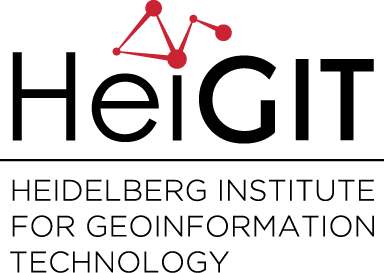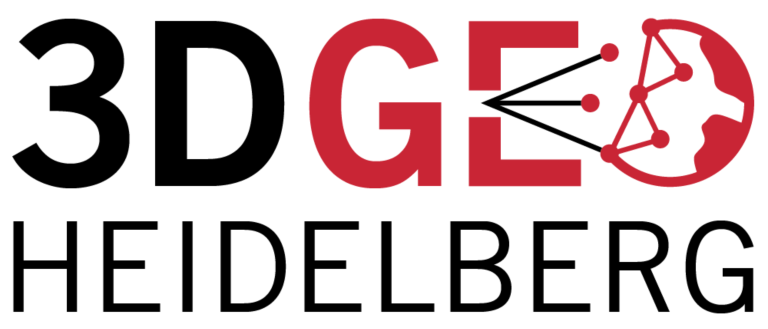Category: Research
-
Colloquium on image processing for geomorphological and hydrological monitoring
We cordially invite everybody interested to our next open GIScience colloquium talk! The speaker is Dr. Anette Eltner TU Dresden, Institute of Photogrammetry und Remote Sensing When: Monday 01.07.2019, 2:15 pm Where: INF 348, room 015 (Institute of Geography, Heidelberg University) Image processing for geomorphological and hydrological monitoring The potential of images to answer research questions…
-
Kick-off field campaign for AHK-4D project
From 22 – 25 June, the first field visit within the project AHK-4D – High-resolution and high-frequency monitoring of the rock glacier Äußeres Hochebenkar (AHK) in Austria took place in the Austrian Alps. The aim of this project is to develop a methodology to quantify the magnitudes and frequencies of individual surface change processes of…
-
ISSAR19 – Third Innsbruck Summer School of Alpine Research
Close-range sensing techniques in Alpine terrain have been taught in the frame of a bi-annual ISPRS summer school since 2015. This week, a group of 40 young researchers (mainly PhD students) is participating in the third edition of the summer school to learn about various sensors, processing techniques, and analysis methods for different topics in…
-
Estimating tree height from TanDEM-X data at the northwestern Canadian treeline
A new paper on tree height estimation from TanDEM-X data has just been published in Remote Sensing of Environment. The article finds that tree height can be predicted using TanDEM-X metrics (backscatter, bistatic coherence, and interferometric height) in the sparse forest patches of the Arctic treeline zone at the transition from forest to tundra. Taking…
-
3DGeo at the Geospatial Week 2019
This week, the 3DGeo participated in the ISPRS Geospatial Week 2019 with two presentations among the sessions of the Laser Scanning Workshop with many interesting talks and poster. Presentations were given by Ashutosh Kumar in the Machine Learning Session and Katharina Anders in the Change Detection Session. Highlight: The work by Ashutosh Kumar on feature…
-
Constraints in multi-objective optimization of land use allocation – Repair or penalize?
Land is a spare resource so it makes sense to think about how to use it most efficiently. This leads to the problem of land use allocation under consideration of trade-offs. Multi-objective optimization algorithms are a tool quantify the trade-offs by estimating the Pareto-optimal land use allocations. Often, constraints in the solution space have to…
-
Comparison of Three Algorithms for the Evaluation of TanDEM-X Data for Gully Detection in Krumhuk Farm (Namibia)
Namibia is a dry and low populated country highly dependent on agriculture, with many areas experiencing land degradation accelerated by climate change. One of the most obvious and damaging manifestations of these degradation processes are gullies, which lead to great economic losses while accelerating desertification. The development of standardized methods to detect and monitor the…
-
The Triangle of Shared Data Sources
Todays data production, maintenance, and use have changed in the last years. While these tasks were reserved to professionals until a few years ago, the situation has changed. This is no different in the geographical domain. Volunteers gather general information in Wikipedia and geographical information in OpenStreetMap. Twitter users provide not only text snippets but…
-
Paper on High-Frequency 3D Geomorphic Observation using Hourly LiDAR Time Series
Can you imagine how much sand is being moved on the beach in the course of a week? Did you ever observe truckloads of sand being transported on the beach in the absence of storms and bulldozers? It is hardly possible to estimate to the naked eye, but can be quantified with permanent terrestrial laser…
-
Paper on Analysis of Feature Relevance in Deep Learning for 3D Point Cloud Classification
A paper investigating the relevance of (pre-calculated) features for 3D point cloud classification using deep learning was just published in the ISPRS Annals of Photogrammetry and Remote Sensing. The study presents a non-end-to-end deep learning classifier for 3D point clouds using multiple sets of input features and compares it with an implementation of the state-of-the-art…
-
ISCRAM 2019 in Valencia- Towards closer exchange in crisis management between practitioners, stakeholders and researchers
The 16th ISCRAM conference took place in the city of Valencia (Spain). It succeeded again to gather an international audience of researchers that shared their work all around crisis management. As ISCRAM is mainly interested in the support and intersection of practical application in crisis management and research, the focus was however again on another…


